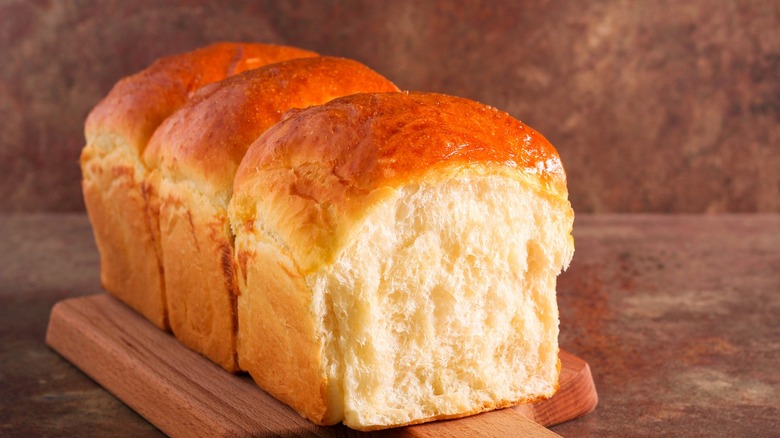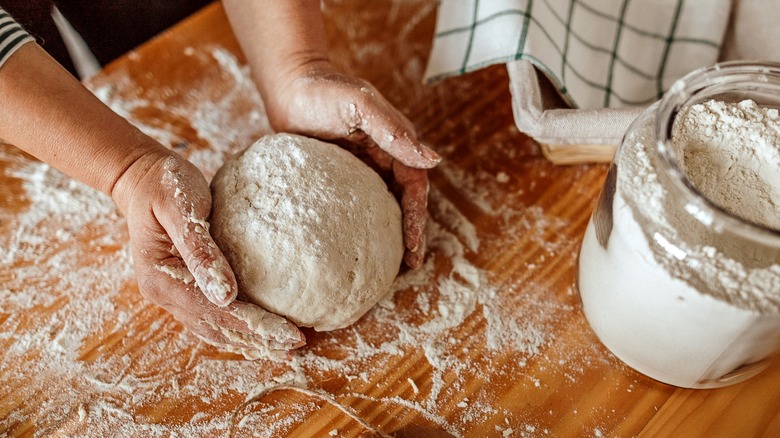Why It's Important To Warm Milk Before Adding To Bread Dough
There's nothing quite like homebaked bread. Though it might feel intimidating (especially if you're making sourdough), it's worth the effort. Choosing water, milk, or some combination in your breadmaking is just one of the variables you'll face. Using milk instead of water in your yeasted bread is an easy way to add a touch of sweetness, making it ideal for challah, dinner rolls, cinnamon rolls, and hot dog buns. Milk sugars not only add a hint of sweetness but also result in a softer, more uniform crumb and ensure a nicely browned crust. But is it that important to warm your milk before adding it to the mix? The short answer is yes.
Warming your milk is essential to the body of a good loaf (or roll), not only to activate your yeast and allow your bread to rise properly (cold slows yeast down, while warm temps speed them up) but also to ensure the breakdown of whey proteins in your milk, which can inhibit the formation of gluten and stymie your rise, lengthening rising times and resulting in a less springy and more dense texture.
Milk-based recipes add fat, making them enriched doughs (as opposed to water-based recipes that yield a lean dough like sourdough or ciabatta or combination-based recipes like some sandwich breads that yield slightly enriched doughs). Enriched doughs usually contain things like milk, sugar, and eggs. These added fats lend tender textures but can weigh down not only the breadmaking process, but also, the final loaf.
Why yeast matters when adding heated milk to bread dough
To get the most out of your enriched dough and end up with a nice fluffy outcome, it's important to match the temperature of your milk to the type of yeast you're using. It's also important to note that too high a heat — around 140 degrees Fahrenheit — can kill your yeast, ruining your loaf. The three types of yeast commonly used in bread making are dry, live, and instant. Depending on which one you're working with, your milk temperature might be slightly different.
Dry yeast and instant yeast are both lying dormant, awaiting a bit of warm liquid to wake up. To activate dry yeast, it should be proofed in its liquid first at a temperature of 105 to 115 degrees Fahrenheit, while instant yeast is designed to be added directly to your flour with the liquid added secondarily. For this reason, instant yeast tolerates higher temperatures, activating in a range between 120 to 130 degrees Fahrenheit. Lastly, live/fresh yeast (also called baker's yeast), is already active and does not need to be activated, it just needs to be combined with a liquid to instantly start blooming. This means milk temperatures can be lowered to about 95 degrees Fahrenheit.
One final note, while some still adhere to scalding milk before adding it to their dough mix, it is advised to let the temperature cool down to those mentioned above before adding the milk to your yeast of choice.

